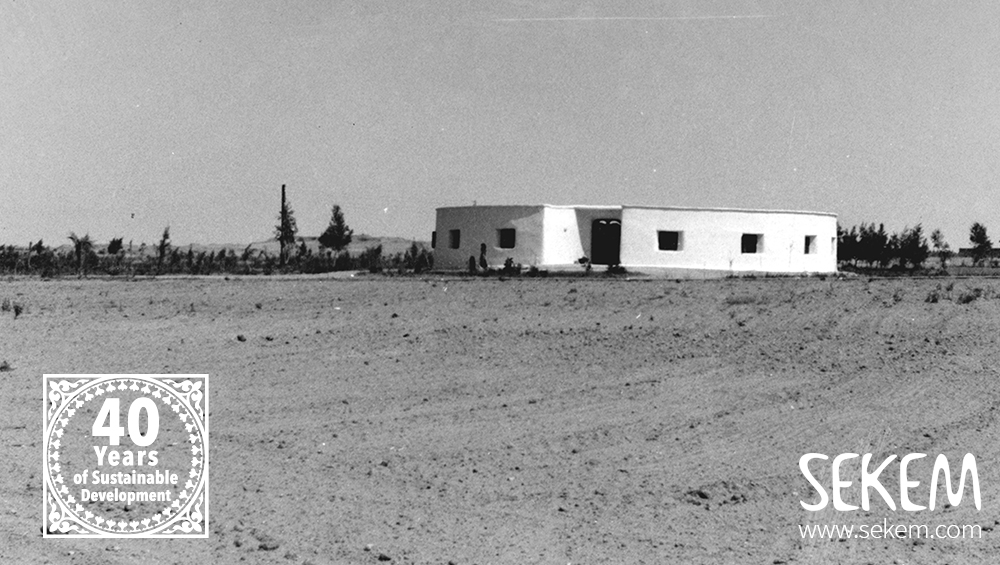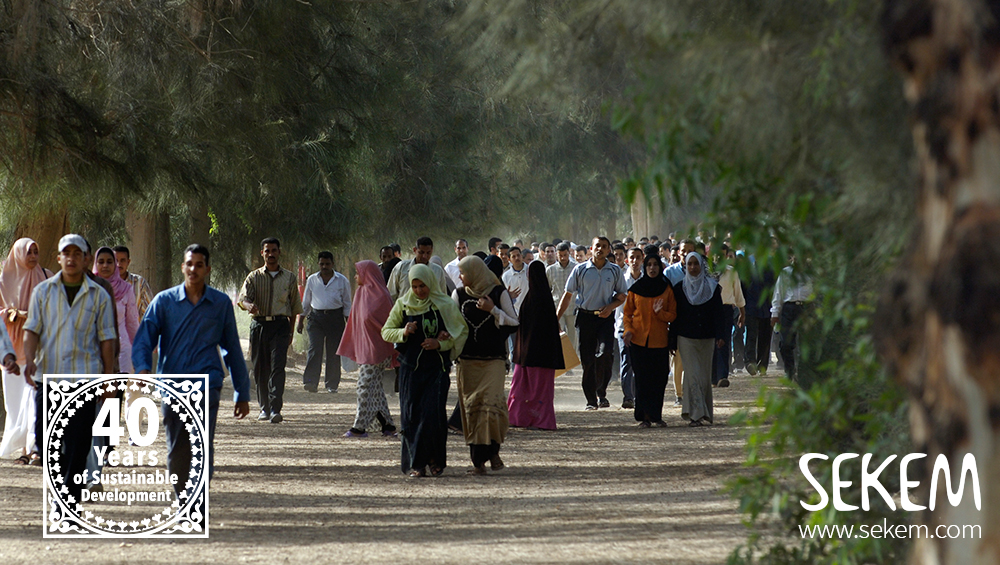By 2050, more than 60% of the world population is estimated to live in cities. Also in Egypt, the urban population is expanding while a good living standard can’t be guaranteed for all citizens. Today, 38% of the Egyptians are living in cities with a population density of 100 people per square kilometers – by 2050, the urban population is even estimated to reach around 50% (according to the online platform Worldometers). More than 27% of the Egyptians are living below the poverty line, according to the latest report of CAPMAS and the unemployment rate has been increasing within the past years. Urbanisation goes hand in hand with challenges like climate change, land degradation, food security, water scarcity and many others. Additionally, the economic situation keeps unstable, which threatens the quality of life of the Egyptian people.
“You can’t solve a problem on the same level that it was created. You have to rise above it to the next level.” Albert Einstein
Albert Einstein once said: “You can’t solve a problem on the same level that it was created. You have to rise above it to the next level.” Certainly, industrial progress is necessary for realizing competitiveness and economic growth. But industrialization urgently needs to be considered more holistically in order to enable sustainable progress and to not end up in the regression for nature and people. Hence, innovation should be determined as a “next level”, in order to address the increasing needs by new unconventional ways, especially when it comes to infrastructure. Innovative applications should not only provide basic physical systems serving the societal needs but be able to adapt to the rapid-changing and challenging world.
Innovation: a key driver of competitive sustainable economies
The SEKEM model can be seen as such an innovative solution for Egypt. In 1977, when Ibrahim Abouleish founded SEKEM, he was able to see Egypt’s obstacles from “another level” by foreseeing the future challenges. Back then, the Egyptian population was around 50 million people (today there are almost 100 million). It was the time of economic liberalization, accompanied by the rapid industrial progress that led to the spread of self-centered practices. Concurrently, high rates of internal migration in Egypt took place; many farmers and people living in rural areas left their lands behind and flocked to Cairo and central areas of Egypt – for better living standard and more opportunities.

In order to combat the growing migrations from land, the Egyptian government has fostered an urban development strategy four years ago, in the framework of its vision for 2030: “A balanced spatial development management of land and resources to accommodate population and improve the quality of their lives.” The strategy involves several programs that support the substitution and renewal of the infrastructure, desert lands reclamation, and building new cities while promoting population settlement there.
As a part of this strategy, the Egyptian government is currently adopting a new venture, “The City of Medicine”. Around 2200 Feddan (approx. 924 ha) of the desert land in Beni Suef governorate, located 120 km south of Cairo, shall be reclaimed. Inspired by SEKEM, the project’s plan is to cultivate Organic medicinal herbs and produce phytopharmaceuticals while using solar energy for running the industrial operations.
“Every day we have to start new and reinvent ourselves,” Helmy Abouleish
The 9th Sustainable Development Goal (SDG 9) of the United Nations puts infrastructure, industrialization, and innovation into focus. SEKEM is committed to this three aspects by its holistic approach that fosters research projects and social innovation. “To find a balance between the dimensions that are required by a holistic and sustainable development, creativity, research and innovative thinking are crucial – therefore we have to reinvent ourselves every day new,” says Helmy Abouleish, SEKEM’s CEO. Hence, research, social innovation and supporting community development in former desert areas are important goals in SEKEM’s recently published Vision for 2057.
Noha Hussein
40 years ago, SEKEM was founded with the idea of sustainable development and building of a prosperous future for Egypt and the world. For SEKEM, sustainable development is not a fancy topic to talk about, but the core business. SEKEM commits itself to the “2030 Agenda for Sustainable Development” and works to fulfill all 17 SDGs. SEKEMmeasures its holistic concept with the Sustainability Flower. The flower represents a management, assessment and communication tool symbolizing the concept of sustainable development in its four dimensions: economic life, societal life, cultural life, and ecology.
SEKEM Inspires Government for “City of Medicine”
SEKEM Vision 2057

